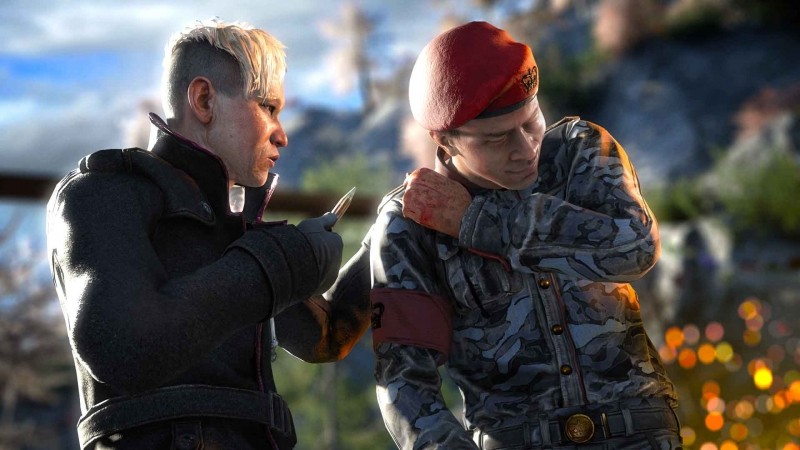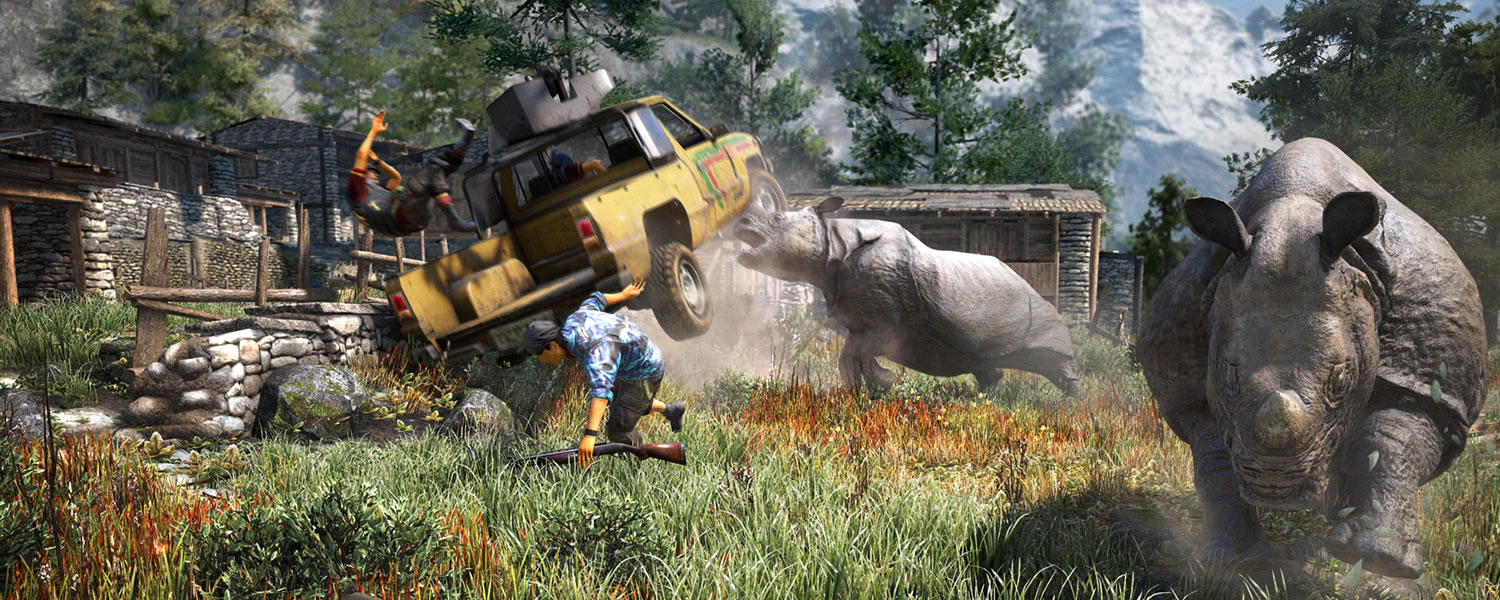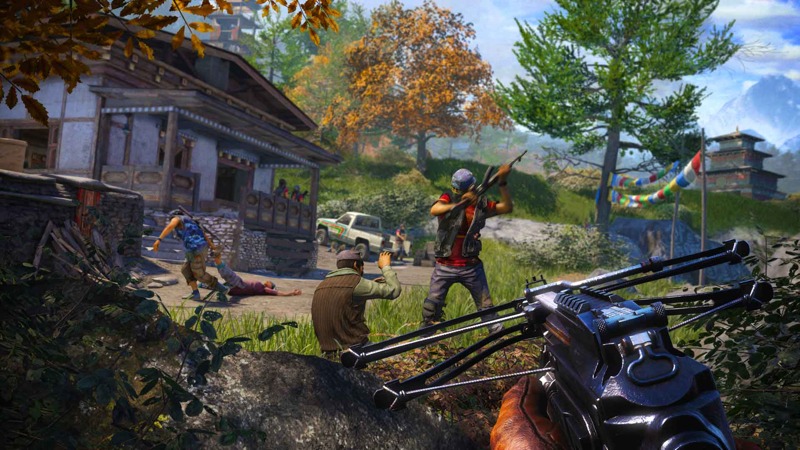Selling 730,000 copies within four months of its release in March 2004, Far Cry spawned a rather lucrative series for Ubisoft. I still have fond memories of the original game's captivating single player campaign and seemingly endless multiplayer action.
Now 10 years later, the series appears to be as strong as ever with the lauded arrival of Far Cry 4. Although I've only had time to play for about an hour, that was enough time to be impressed by this release's immersive gameplay and breathtaking visuals.
Graphics have always been a selling point of the series as few games offer the same open world environments that can be experienced in Far Cry. The latest iteration is no exception, as it is based on the same Dunia Engine 2 game engine has Far Cry 3.
With that being the case, it's no surprise or disappointment to learn that Far Cry 4 looks reminiscent of the previous version. Effects such as god rays are heavily emphasized and used in a way that have tremendous atmospheric impact on the game's environments.
Being an Nvidia "The Way It's Meant to be Played" title, FC4 has loads of optimizations for GeForce cards, including HBAO+, PCSS, TXAA, Godrays, and HairWorks. If nothing else, this should make it all the more interesting to compare results between GPU camps.
Testing Methodology
We used the latest AMD and Nvidia drivers on 25 DirectX 11 graphics card configurations from both companies covering all price ranges. Our test rig was outfitted with the Intel Core i7-4770K to remove CPU bottlenecks that could influence high-end GPU scores.

For benchmarking we used fraps to record 60 seconds of gameplay. The section of the game used for testing was the first objective to take the tower offline. At the start we jumped into a car with auto-drive enabled so it would take us on the same path to the tower each time. This made each run easy to repeat accurately and allowed us to record the kind of frame rates you should see when playing Far Cry 4.
The graphic settings were set to the 'ultra' preset with no changes made, which set ambient occlusion to SSBC (same as very high and high), anti-aliasing to SMAA (same as very high and high) while godrays were set to volumetric fog.
We tested Far Cry 4 at three desktop display resolutions: 1680x1050, 1920x1200 and 2560x1600 using DX11.
Test System Specs
- Intel Core i7-4770K (3.50GHz)
- x2 8GB Crucial DDR3-2400 (CAS 11-13-13-28)
- Asrock Z97 Extreme6 (Intel Z97)
- Silverstone Strider Series (700w)
- Samsung SSD 840 Pro 512GB (SATA 6Gb/s)
- Gigabyte Radeon R9 290X (4096MB)
- Gigabyte Radeon R9 290 (4096MB)
- Gigabyte Radeon R9 285 (2048MB)
- Gigabyte Radeon R9 280X (3072MB)
- HIS Radeon R9 270X (2048MB)
- HIS Radeon R9 270 (2048MB)
- HIS Radeon R7 265 (2048MB)
- HIS Radeon R7 250 (1024MB)
- HIS Radeon R7 240 (1024MB)
- HIS Radeon HD 7970 GHz (3072MB)
- HIS Radeon HD 7970 (3072MB)
- HIS Radeon HD 7950 Boost (3072MB)
- HIS Radeon HD 7950 (3072MB)
- HIS Radeon HD 7870 (2048MB)
- HIS Radeon HD 7850 (2048MB)
- HIS Radeon HD 7750 (1024MB)
- Gigabyte GeForce GTX Titan (6144MB)
- Gigabyte GeForce GTX 980 (4096MB)
- Gigabyte GeForce GTX 970 (4096MB)
- Gigabyte GeForce GTX 780 Ti (3072MB)
- Gigabyte GeForce GTX 780 (3072MB)
- Gigabyte GeForce GTX 770 (2048MB)
- Palit GeForce GTX 760 (2048MB)
- Gigabyte GeForce GTX 750 Ti (2048MB)
- Gainward GeForce GTX 680 (2048MB)
- Gainward GeForce GTX 660 Ti (2048MB)
- Gainward GeForce GTX 660 (2048MB)
- Microsoft Windows 8.1 Pro 64-bit
- Nvidia GeForce 344.75 WHQL
- AMD Catalyst 14.11.2 Beta

